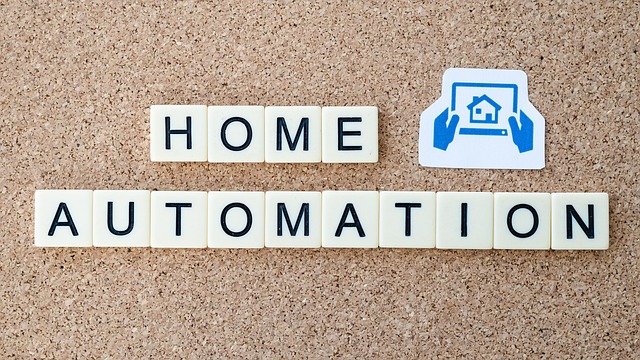Smart motion sensors for pets are transforming home security by leveraging machine learning algorithms and analytics to differentiate between familiar pets and intruders, significantly reducing false alarms. These innovative devices learn pet routines and behaviors, providing homeowners with enhanced safety and peace of mind while integrating seamlessly into smart home systems to automate tasks like lighting and temperature adjustments. With advancements in AI and machine learning, future sensors promise even more sophisticated breed, size, and behavior recognition, offering personalized security solutions for both pets and owners.
In today’s digital era, smart homes are becoming increasingly popular, and a key component is the evolution of motion detectors. Traditional models often struggle with false alarms due to their inability to distinguish between intruders and beloved pets. This is where smart motion sensors for pets step in as revolutionary game-changers. These advanced devices offer pet-friendly solutions, ensuring a peaceful home environment without annoying interruptions. By employing sophisticated technology, they differentiate between furry friends and unwelcome visitors, providing a more reliable and tailored security experience.
- Understanding Traditional Motion Detectors and Their Limitations
- The Rise of Smart Pet-Friendly Motion Sensors
- How These Sensors Differentiate Between Pets and Intruders
- Benefits and Future Prospects of Pet-Specific Motion Detection Technology
Understanding Traditional Motion Detectors and Their Limitations

Traditional motion detectors, while a common security measure, often struggle with distinguishing between humans and pets. These basic sensors typically trigger alerts based on any sudden movement within their range, leading to numerous false alarms from unsuspecting family pets. This can result in annoyance for homeowners and potential distrust of the security system.
The limitations of traditional motion sensors highlight the need for an advanced solution: smart motion sensors for pets. These innovative devices are designed to learn patterns and behavior, enabling them to differentiate between familiar pets and intruders. By utilizing machine learning algorithms and advanced analytics, smart motion sensors can adapt to a home’s environment, minimizing false alerts and ensuring a more reliable security system that focuses on genuine threats.
The Rise of Smart Pet-Friendly Motion Sensors

In recent years, there has been a significant shift towards creating smarter and more pet-friendly homes, and at the forefront of this revolution are advanced smart motion sensors. These innovative devices are no longer just about security; they have evolved to recognize familiar pets and distinguish them from potential intruders. This technology offers homeowners peace of mind by allowing them to differentiate between beloved family members and unwelcome visitors, ensuring an enhanced level of safety and comfort.
The rise of smart pet-friendly motion sensors is driven by the growing demand for home automation and a deeper understanding of pet behavior. These sensors utilize advanced algorithms and machine learning techniques to identify pets based on their unique movements, sizes, and even habits. By learning the routines of household pets, these devices can automatically dismiss false alarms triggered by furry friends, preventing unnecessary disturbances. This level of customization ensures that homeowners can enjoy the convenience of a secure home without the hassle of constant alerts.
How These Sensors Differentiate Between Pets and Intruders

Smart motion detectors designed for pets employ advanced technologies like machine learning algorithms and sophisticated sensor fusion to differentiate between familiar pets and potential intruders. These sensors learn the unique movement patterns, sizes, and behaviors of pets through initial training periods, allowing them to recognize cats, dogs, or even specific animals within a household. When an animal other than those registered enters the area, the sensor detects and distinguishes it from a pet, triggering an alert instead of setting off a false alarm.
The differentiation process involves analyzing factors such as speed, direction, duration of movement, and body structure. Intruders often exhibit different behaviors or move in unfamiliar ways compared to pets, enabling the sensors to make accurate distinctions. This technology not only enhances home security by alerting owners to unwelcome visitors but also ensures peace of mind by avoiding unnecessary scare tactics directed at beloved family pets.
Benefits and Future Prospects of Pet-Specific Motion Detection Technology

The benefits of pet-specific motion detection technology are numerous, offering peace of mind and enhanced security for homeowners while improving the quality of life for their furry companions. One of the primary advantages is the reduction in false alarms caused by pets triggering standard sensors. These smart motion sensors for pets can learn individual animal behaviors, recognizing patterns such as regular movement during sleep or playtime, thus avoiding unnecessary alerts. This technology respects pet routines and keeps them from being disturbed by false alarm reactions.
Looking ahead, the future of pet-specific motion detection holds exciting possibilities with advancements in AI and machine learning. Sensors could become even more sophisticated, capable of identifying specific pets by breed, size, or behavior patterns. This level of personalization ensures tailored security solutions for each household, fostering a harmonious relationship between homeowners, their pets, and intruders. Moreover, the integration of pet-friendly motion sensors into smart home systems can enable automated responses like adjusting lighting or temperature settings based on pet activity, contributing to a more comfortable living environment.
Smart motion sensors that differentiate between pets and intruders represent a significant advancement in home security technology. By leveraging machine learning and sophisticated algorithms, these innovative devices offer a more nuanced approach to detecting and responding to movement, enhancing safety while fostering a harmonious coexistence with beloved pets. As research continues to refine pet-specific motion detection technology, we can expect even greater accuracy and integration into our smart homes, ensuring peace of mind for homeowners and the well-being of their furry companions.
